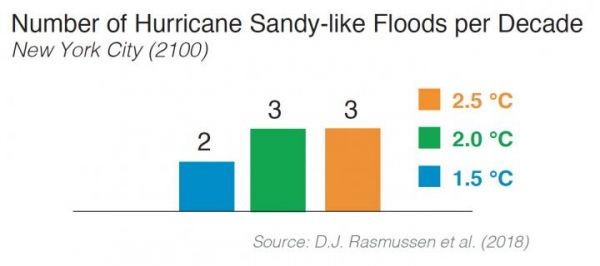The 2015 Paris climate agreement sought to stabilize global temperatures by limiting warming to well below 2.0 degrees Celsius above pre-industrial levels and to pursue limiting warming even further, to 1.5 C.
To quantify what that would mean for people living in coastal areas, a group of researchers employed a global network of tide gauges and a local sea level projection framework to explore differences in the frequency of storm surges and other extreme sea-level events across three scenarios: global temperature increases of 1.5, 2.0 and 2.5 C.
They concluded that by 2150, the seemingly small difference between an increase of 1.5 and 2.0 C would mean the permanent inundation of lands currently home to about 5 million people, including 60,000 who live on small island nations.
Read more at: Princeton University
Image: The study found that New York City can expect two Hurricane Sandy-like floods per decade by the year 2100 if global temperatures rise 1.5 degrees Celsius above pre-industrial levels, and three such events per decade if temperatures rise to 2.0 and 2.5 (CREDIT: DJ Rasmussen, Princeton University)


